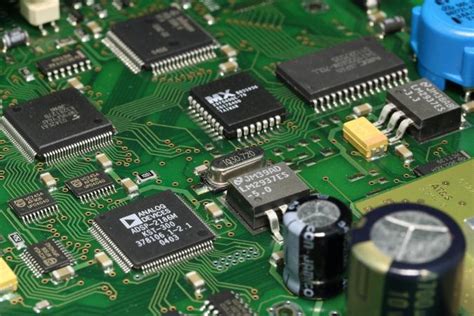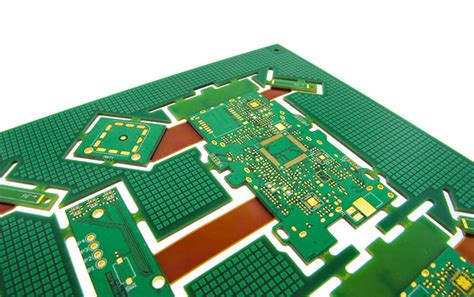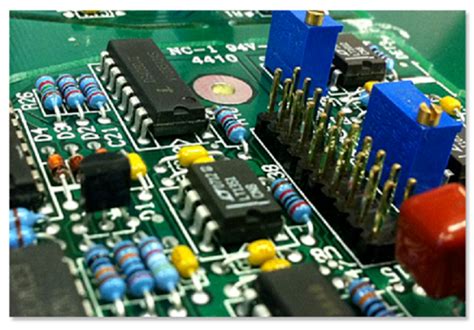Times are changing, but the golden rules of PCB design will not change
The following content of this article introduces the ten most effective design rules that electronic design engineers should keep in mind and practice when using design software for PCB layout design and commercial manufacturing. Engineers do not need to implement these rules in order of time or relative importance, just following them all can greatly change product design.
Rule 1: Choose the right grid
Set and always use the grid spacing that can match the most components. Although multiple grids seem to be effective, if engineers can think more at the beginning of PCB layout design, they can avoid difficulties in spacing setting and maximize the use of circuit boards. Since many devices use multiple package sizes, engineers should use products that are most conducive to their own designs.
In addition, polygons are crucial for circuit board copper pouring. Multi-grid circuit boards generally produce polygon filling deviations when pouring polygon copper. Although they are not as standard as those based on a single grid, they can provide circuit board life that exceeds the required life.
Rule 2: Keep the path shortest and most direct
This sounds simple and ordinary, but it should be kept in mind at every stage, even if it means changing the circuit board layout to optimize the wiring length. This is especially true for analog and high-speed digital circuits, where system performance is always partially limited by impedance and parasitic effects.

Rule 3: Use power planes whenever possible to manage the distribution of power and ground lines
Power plane copper is the faster and simpler option for most PCB design software. By connecting a large number of wires in common, you can ensure that the current is provided with the highest efficiency and the least impedance or voltage drop, while providing an adequate ground return path.
If possible, you can also run multiple power lines in the same area of the board. Confirm that the ground plane covers most of the layer of the PCB, which is conducive to the interaction between the lines running on adjacent layers.
Rule 4: Group related components with required test points
For example, placing the discrete components required for OpAmp operational amplifiers close to the device so that bypass capacitors and resistors can work with them on the same ground, which helps optimize the wiring length mentioned in Rule 2, and also makes testing and fault detection easier.
Rule 5: Repeat the required board multiple times on another larger board for PCB assembly
Choosing the size that best suits the equipment used by the manufacturer can help reduce prototyping and manufacturing costs.
Start by laying out your board on a panel, contact your board manufacturer to get their preferred dimensions for each panel, then modify your design specifications and try to iterate your design as many times as possible within those panel dimensions.
Rule 6: Consolidate component values.
As a designer, you will choose discrete components that are either higher or lower in value, but perform the same function. By consolidating within a smaller range of standard values, you can simplify your bill of materials and potentially reduce costs. If you have a range of PCB products based on preferred device values, you will be better able to make the right inventory management decisions in the long run.
Rule 7: Perform as many design rule checks (DRCs) as possible.
Although it only takes a short time to run the DRC function on your PCB software, in a more complex design environment, you can save a lot of time as long as you always perform checks during the design process, which is a good habit worth maintaining. Every routing decision is critical, and performing DRCs can remind you of the most important routing at any time.
Rule 8: Use silkscreen flexibly.
Silkscreen can be used to mark a variety of useful information for future use by the board manufacturer, service or test engineer, installer, or equipment commissioner. In addition to clearly labeling functions and test points, indicate the orientation of components and connectors whenever possible, even if these notes are printed on the underside of the board where the components are used (after the board is assembled).
Make good use of silkscreen technology on both the top and bottom surfaces of the board to reduce rework and streamline the production process.
Rule 9: Decoupling capacitors are required
Don’t try to optimize your design by avoiding decoupling power lines and relying on the extreme values in the component datasheet. Capacitors are cheap and durable, so you can spend as much time as possible assembling them well and follow Rule 6 to use standard value ranges to keep inventory neat.
Rule 10: Generate PCB manufacturing parameters and verify before submitting for production
While most board manufacturers are happy to download and verify directly for you, it is best to export the Gerber files yourself and check whether they are as expected using a free viewer to avoid misunderstandings.
By verifying it yourself, you may even find some careless mistakes and avoid the cost of completing the production according to the wrong parameters.
As circuit designs become more widely shared and internal teams increasingly rely on reference designs, basic rules like these will continue to be a feature of printed circuit board design, and we believe that this is very important for PCB design. Knowing these basic rules gives developers great flexibility to increase the value of their products and get the most from the boards they manufacture.
Even for those who are new to board design, just keeping these basic rules in mind can speed up the learning process and increase confidence.







